
Fountain Auto Rell Device
Assembly Instructions
rev 7/22/22
Rell Kit Parts List
Image Component Quantity
Stopper
(#7 or #10 will depend on fountain setup) 1
Refill Assembly 1
Winter Care
Follow all winter care instructions as given in the assmebly instructions of your fountain. It is recommended that all refill devices be removed from the
fountain for the winter to avoid damage from freezing.
For more Campania product information visit www.campaniainternational.com
Assembly Instructions
Step 1 - Once your fountain is positioned in the location where it is to be installed, feed hose
attachment all the way through the hole in the basin and run the clear ¼” hose through
the channel in the bottom with the pump cord.
Step 2 - Leave enough hose at the top end so that you can place the device inside the fountain
bowl or basin.
Step 3 - Fit cord and refill hose into the appropriate stopper.
Step 4 - Press stopper firmly into the hole of basin.
Step 5 - Attach the grey water regulator to the end of the garden hose to be used for refilling.
Step 6 - Place the refill assembly in the bowl or basin in the desired location
6a - Please note: Refill assembly will not fit inside the pump cover of most fountains.
Step 7 - As your fountains water level drops from evaporation and splashing, the float valve will
drop, opening the water flow valve within the assembly.
Step 8 - When the water level is returned to full, the water flow will shut off leaving your fountain
to run efficiently without damaging water loss.

Troubleshooting:
Pump Not Working - When operating the pump for the first time, it can take a few minutes before water begins to flow properly. If it is still not working after
a few minutes, please follow our troubleshooting tips below. Before troubleshooting, UNPLUG YOUR PUMP.
Step 1 - Submerge Pump: Ensure your pump is fully submerged in water at all times to avoid pump damage.
Step 2 - Manual Check: If the pump cover is removable, try removing the cover to access the impeller area. Turn the rotor to ensure it is not broken or
jammed.
Pump Noise - Some sound from the pump may be normal, but you can follow these tips to reduce sound or resolve abnormal noises.
Step 1 - Submerge Pump: Ensure your pump is fully submerged at all times and clean of debris, dirt and algae buildup.
Step 2 - Check Location: You may hear the vibration of the pump touching the side walls of the fountain. Make sure the pump is only touching the bottom.
Step 3 - Check Flow Rate: Too low of a flow rate might cause spews or burps.
Water Flow Rate - Some fountains come with a dial or valve to adjust the flow rate, but if you do not have this option or if you are still unsatisfied with your
flow rate after changing the settings, check out our tips below.
Step 1 - Adjust the Water Level: Insufficient water levels can affect water intake by the pump. Check the fountain instructions to ensure the appropriate
water capacity for your fountain.
Step 2 - Check for Kinks: Check to make sure the tubing is not kinked. Kinks in the tubing can slow or halt the flow of water.
Step 3 - Clamp the Hose: To slow the water flow, try clamping the hose with a hose clamp or zip-tie.
Splashing - Having trouble with splashing? Some splashing is inevitable, especially when you first turn on your fountain, but if you are experiencing
excessive splashing, try our troubleshooting tips below.
Step 1 - Adjust the Water Level: Ensure the pump is fully submerged, but avoid overfilling your fountain.
Step 2 - Flow Rate: If your pump includes a dial or valve to adjust the flow rate, try changing the settings to see if it affects splashing. If your pump is
not adjustable, check our Flow Rate section to learn about other ways to change the flow rate.
Step 3 - Adjust Position: Try arranging stones or placing a splash guard, at the fountain base. You can also place a screen in the basin.
Leaking - If your fountain is leaking, check these quick tips on how to fix it.
Step 1 - Adjust the Water Level: Your fountain may leak if it is too full.
Step 2 - Check Tubing: Check that the tubing is attached completely and correctly.
Step 3 - Check Stopper: Ensure stopper is completely seated in the fountain. You can also use 100% pure clear silicone to ensure a proper seal is achieved
Step 4 - Cracking: Your fountain may be cracked from improper winter care; see Winter Care in Maintenance Tips.
Maintenance:
Pump Care - The fountain relies heavily on the quality of the pump. A well-maintained pump can last several years.
Step 1 - Fully submerge: Ensure the pump is fully submerged at all times to avoid damage.
Step 2 - Ensure water level is sufficient: Check water levels regularly as water may evaporate over time, and periodically change water to avoid algae
buildup.
Step 3 - Clean pump: Use soap and water, or white vinegar and water, with a small, soft brush to clean the pump of debris, dirt, and algae buildup.
This should be done every 2-3 months.
Surface Care - Paints and finishes may fade over time due to weathering. By following these tips, you will be able to maintain your fountain’s surface.
Step 1 - Control Algae and White Scale: Due to water evaporation, you may see white residue on your fountain surface from the mineral content in
your water supply. Algaecides and cleansers can help prevent buildup that occurs from minerals and hard water.
Step 2 - Protect and Refinish: Depending on the material of your fountain, protectants and sprays may prolong the appearance of the surface. Paint and
refinishing kits can be used for touch-up.
Winter Care - Many materials used to produce fountains can expand and contract in different temperatures/humidity levels. If the temperature falls below
32°F or humidity levels change drastically, follow the steps below to protect your fountain.
Step 1 - Bring inside: If possible, bring your outdoor fountain inside for the winter.
Step 2 - Store in dry location: If unable to bring inside, store your fountain in a dry and covered location.
Step 3 - Bring components inside: Move all internal components (stoppers, tubing, lights, pump, etc) inside. A pump can stay in a fountain for the
winter, but if you choose to leave it in, it must be completely dry and insulated with plastic bags and towel to ensure it stays dry. However it is
recommended to bring it inside.
Step 4 - Completely drain: It is important to prevent water from accumulating anywhere, as freezing and thawing of water can cause pump damage
and cause cracks to form in your fountain. Remove the drain plugs.
Step 5 - Elevate Fountain: Fountains may freeze to the ground and cause cracking in the base if left outside in the winter. If unable to store inside or in
a dry covered location, try to raise your fountain above ground.
Step 6 - Cover Fountain: Make sure to use a breathable material when covering. DO NOT COVER IN PLASTIC! Make sure the fountain cover is
taut so that no snow or water can pool in the cover. Tie the opening at the bottom of the cover around the fountain.
-
 1
1
-
 2
2
CAMPANIA Refill #7 Assembly Instructions
- Type
- Assembly Instructions
- This manual is also suitable for
Ask a question and I''ll find the answer in the document
Finding information in a document is now easier with AI
Related papers
-
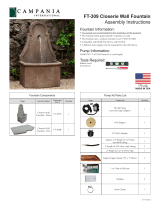 CAMPANIA FT-309 Operating instructions
CAMPANIA FT-309 Operating instructions
-
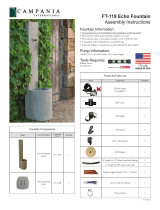 CAMPANIA FT-119 Operating instructions
CAMPANIA FT-119 Operating instructions
-
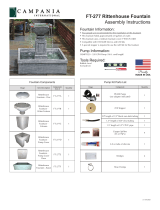 CAMPANIA FT-277 Operating instructions
CAMPANIA FT-277 Operating instructions
-
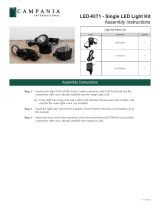 CAMPANIA LED-KIT1 Operating instructions
CAMPANIA LED-KIT1 Operating instructions
-
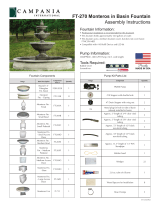 CAMPANIA FT-270 Operating instructions
CAMPANIA FT-270 Operating instructions
-
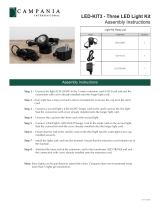 CAMPANIA LED-KIT3 Operating instructions
CAMPANIA LED-KIT3 Operating instructions
-
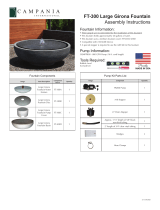 CAMPANIA FT-300 Operating instructions
CAMPANIA FT-300 Operating instructions
-
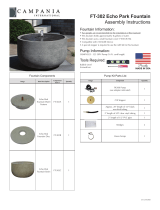 CAMPANIA FT-302 Operating instructions
CAMPANIA FT-302 Operating instructions
-
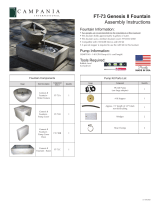 CAMPANIA FT-73 Operating instructions
CAMPANIA FT-73 Operating instructions
-
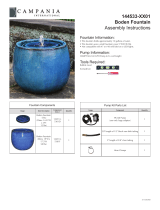 CAMPANIA 144533-5301 Operating instructions
CAMPANIA 144533-5301 Operating instructions
Other documents
-
Angelo Decor AD93319 Operating instructions
-
Angelo Decor AD93110 Operating instructions
-
Angelo Decor AD93108 Operating instructions
-
Essential Garden FD0167AA Owner's manual
-
Water Wonders WWLVCG-CV User manual
-
 Peaktop FI0030AA Installation guide
Peaktop FI0030AA Installation guide
-
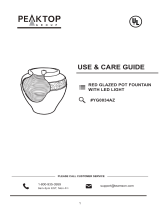 Peaktop YG0034AZ User manual
Peaktop YG0034AZ User manual
-
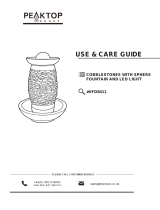 Peaktop VFD8411 User manual
Peaktop VFD8411 User manual
-
Kenroy Home 51014MS Installation guide
-
North Star Designs NSD10031 Installation guide














